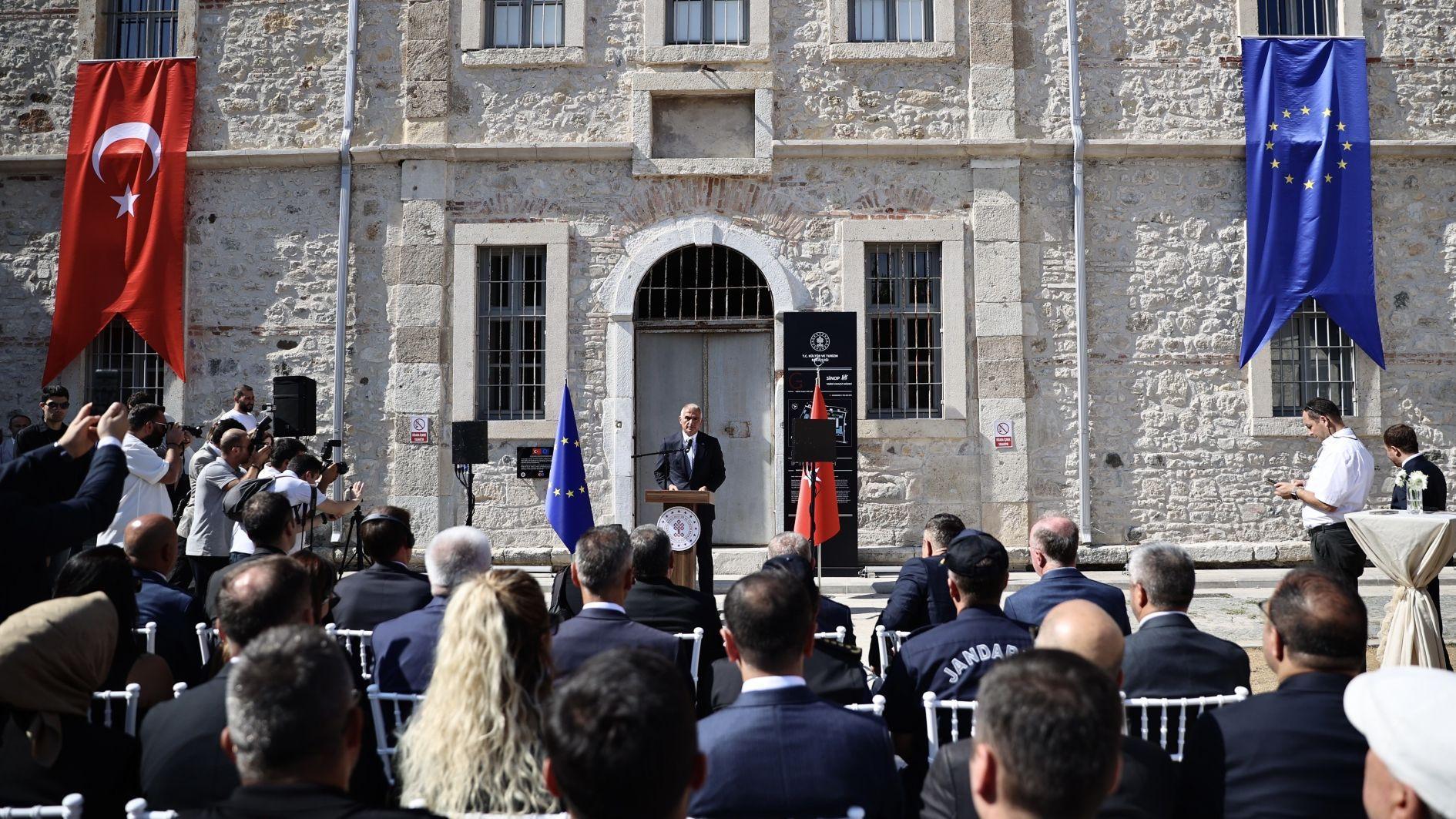
Türkiye has officially reopened the well-known historic prison in the northern province of Sinop, transforming the once-feared fortress into both a museum and a cultural and arts hub after an extensive restoration supported by the European Union.
Often described as Türkiye’s “Alcatraz” for its imposing structure on the Black Sea coast, the historical Sinop Prison has now been given new life through an 8 million euro ($9.3 million) restoration project funded under an EU program.
Türkiye’s Culture and Tourism Ministry also contributed 180 million Turkish Liras ($4.3 million) for exhibition design, display arrangements and new visitor pathways.
The joint renovation efforts repaired the prison’s towers, courtyards and thick stone walls while adding new exhibition areas for visitors.
Speaking at the opening ceremony, Culture and Tourism Minister Mehmet Nuri Ersoy underlined that the restoration was designed not only to protect the building but also to preserve its symbolic role in the country’s cultural history.
“Sinop Prison is no longer only a silent witness of the past, but a cultural and memory space that sheds light on the future,” Ersoy said. “Every stone and every wall carries a story here. We are protecting these stories for Türkiye’s collective memory.”
Used as a prison between 1887 and 1999 and converted to a museum in 2000, the landmark site was long associated with political dissidents, intellectuals and writers.
Figures such as renowned Turkish author Sabahattin Ali, who penned his well-known poem “Aldırma Gönül” behind its walls, were once among its inmates.
Covering some 3,500 square meters of exhibition space, the museum will now host cultural events, performances and civil society activities alongside permanent displays, aiming to make Sinop a new attraction point in the Black Sea region, according to the minister.
Echoing Ersoy’s remarks, Jurgis Vilcinskas, deputy head of the EU Delegation to Türkiye, said the project was about more than preserving walls and towers.
“This place is now a center for creativity, community and connection,” he said. “It will be a venue where young people draw inspiration from history, artists produce new works and citizens feel cultural heritage belongs to them.”